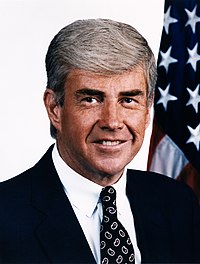
The 1996 United States presidential election was the 53rd quadrennial presidential election. It was held on Tuesday, November 5, 1996. Incumbent Democratic President Bill Clinton defeated former Senate Majority Leader Bob Dole, the Republican nominee, and Ross Perot, the Reform Party nominee.

The 1996 National Convention of the Republican Party of the United States convened at the San Diego Convention Center (SDCC) in San Diego, California, from August 12 to August 15, 1996. The convention nominated Bob Dole, former Senator from Kansas, for President and Jack Kemp, former Representative from suburban Buffalo, New York, and Secretary of Housing and Urban Development, for Vice President.
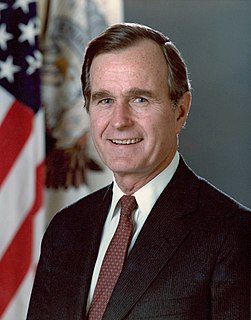
The 1988 Republican presidential primaries were the selection process that Republican voters used to choose their nominee for President of the United States in the 1988 U.S. presidential election. Incumbent Vice President George H.W. Bush was selected as the nominee through a series of primary elections and caucuses culminating in the 1988 Republican National Convention held from August 15 to August 18, 1988, in New Orleans, Louisiana.
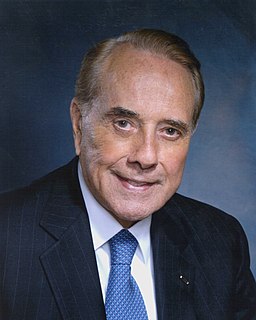
The 1996 Republican presidential primaries were the selection process by which voters of the Republican Party chose its nominee for President of the United States in the 1996 U.S. presidential election. Former Senator Bob Dole of Kansas, former Senate Majority Leader was selected as the nominee through a series of primary elections and caucuses culminating in the 1996 Republican National Convention held from August 12 to August 15, 1996, in San Diego, California.

This article lists those who were potential candidates for the Republican nomination for Vice President of the United States in the 2008 election. On March 4, 2008, Senator John McCain of Arizona won a majority of pledged delegates for the Republican nomination for President of the United States, and became the presumptive nominee.

The 2000 Republican presidential primaries were the selection process by which voters of the Republican Party chose its nominee for President of the United States in the 2000 U.S. presidential election. Texas Governor George W. Bush was selected as the nominee through a series of primary elections and caucuses culminating in the 2000 Republican National Convention held from July 31 to August 3, 2000, in Philadelphia, Pennsylvania.
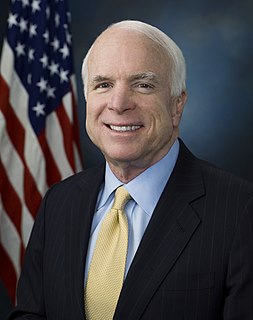
The 2008 United States presidential election in Alaska took place on November 4, 2008, as part of the 2008 United States presidential election held throughout all 50 states and the District of Columbia. Voters chose 3 electors, or representatives to the Electoral College, who voted for president and vice president.

The Ohio general elections, 2010 were held on November 2, 2010 throughout Ohio. Primary elections took place on May 4, 2010.

This article lists those who were potential candidates for the Republican nomination for Vice President of the United States in the 2000 election. On March 7, 2000, Governor George W. Bush of Texas won a majority of pledged delegates for the Republican nomination for President of the United States, and became the presumptive nominee.

This article lists those who were potential candidates for the Democratic nomination for Vice President of the United States in the 1992 election. Arkansas Governor Bill Clinton won the 1992 Democratic nomination for President of the United States, and chose Tennessee Senator Albert Gore, Jr. as his running mate on July 9, 1992. Clinton considered roughly forty different candidates for vice president, including those who did not hold elective office, but Clinton ultimately chose Gore, a two-term Senator who had previously run for president in 1988. Former Assistant Secretary of State Warren Christopher led Clinton's vice presidential selection team. In making the selection, Clinton emphasized Gore's experience with foreign policy and environmental issues. Clinton's choice of a fellow young southern centrist defied conventional wisdom, but the choice of Gore was well-received, and Gore made an effective surrogate on the campaign trail. The Clinton-Gore ticket ultimately defeated the Republican Bush-Quayle ticket and the independent Perot-Stockdale ticket, and the Clinton-Gore duo became the youngest ticket in history to win a presidential election.
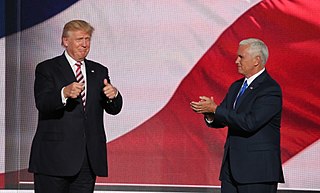
This article lists potential candidates for the Republican nomination for Vice President of the United States in the 2016 United States presidential election. Businessman Donald Trump of New York, the 2016 Republican nominee for President of the United States, considered several prominent Republicans and other individuals before selecting Governor Mike Pence of Indiana as his running mate on July 15, 2016. Pence formally won the vice presidential nomination on July 19, 2016, at the 2016 Republican National Convention. As the Trump-Pence ticket won the 2016 presidential election, Pence became Vice President of the United States on January 20, 2017.

This article lists potential candidates for the Democratic nomination for Vice President of the United States in the 2016 election. Former Secretary of State Hillary Clinton, the 2016 Democratic nominee for President of the United States, chose Senator Tim Kaine of Virginia as her running mate. The formal nomination took place at the 2016 Democratic National Convention. The Clinton-Kaine ticket lost the 2016 presidential election to the Republican Trump-Pence ticket, and Kaine returned to the Senate following the campaign.

This article lists those who were potential candidates for the Democratic nomination for Vice President of the United States in the 1988 election. Massachusetts Governor Michael Dukakis won the 1988 Democratic nomination for President of the United States, and chose Texas Senator Lloyd Bentsen as his running mate. Dukakis chose Bentsen in order to appeal to Southerners and in hopes of carrying Bentsen's home state of Texas. The choice of Bentsen caused some backlash from Jesse Jackson, who had wanted to be chosen as the vice presidential nominee, and progressives such as Ralph Nader. Paul Brountas, a longtime Dukakis aide, led the search for Dukakis's running mate. The Dukakis-Bentsen ticket would lose to the Bush-Quayle ticket in the general election. Coincidental to the presidential election, Bentsen won re-election as senator.

This article lists those who were potential candidates for the Republican nomination for Vice President of the United States in the 1988 election. Incumbent Vice President George H.W. Bush won the 1988 Republican nomination for President of the United States, and chose Indiana Senator Dan Quayle as his running mate. The selection of Quayle surprised many of Bush's closest advisers, who had expected Bush to pick a more well-known running mate. However, Bush adviser Roger Ailes helped convince Bush that Quayle would be able to effectively attack the Democratic presidential nominee, Michael Dukakis. Bush also liked Quayle's youth and felt that Quayle would make for a loyal vice president. The Bush-Quayle ticket ultimately defeated the Dukakis-Bentsen ticket in the 1988 election.
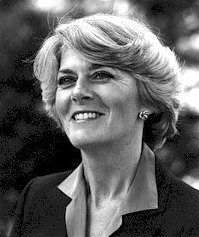
This article lists those who were potential candidates for the Democratic nomination for Vice President of the United States in the 1984 election. Former Vice President Walter Mondale won the 1984 Democratic nomination for President of the United States, and chose New York Representative Geraldine Ferraro as his running mate. Ferraro was the first woman to be a part of a national ticket for a major party. Mondale chose Ferraro in hopes of energizing the base and winning the votes of women, but also because he viewed her as a solid legislator who had won the approval of Speaker Tip O'Neill. John R. Reilly, an attorney and a senior adviser to Mondale, managed the search for a running mate. Mondale seriously considered his major rival for the 1984 presidential nomination, Senator Gary Hart, but Mondale refused to consider a second rival, Jesse Jackson, on the grounds that the differences between their policies were too great. The Mondale-Ferraro ticket ultimately lost to the Reagan-Bush ticket.

This article lists those who were potential candidates for the Republican nomination for Vice President of the United States in the 1980 election. Former California Governor Ronald Reagan won the 1980 Republican nomination for President of the United States, and chose former Texas Representative George H. W. Bush as his running mate. Reagan had considered naming former president Gerald Ford as his running mate, but after Ford and Reagan were unable to agree to be on the same ticket, Reagan turned to Bush, his primary rival for the 1980 Republican nomination. Though Bush had criticized Reagan's policies, Reagan chose Bush to help unify the party, and Bush agreed to be on the ticket and to support Reagan's platform. The Reagan-Bush ticket defeated the incumbent Democratic Carter-Mondale ticket, and in 1984 won re-election defeating the Mondale-Ferraro ticket. Bush was later elected president in his own right in 1988.

This article lists those who were potential candidates for the Republican nomination for Vice President of the United States in the 1976 election. At the 1976 Republican National Convention, incumbent President Gerald Ford narrowly won the presidential nomination over former California Governor Ronald Reagan. Ford had decided not to pick Vice President Nelson Rockefeller as his running mate, due to Rockefeller's unpopularity with the right wing of the Republican Party. Ford chose Kansas Senator Bob Dole as his running mate, instead. Dole was acceptable to the conservative wing of the party, and Ford hoped that Dole would help the ticket win the western states and the agricultural vote. The Ford-Dole ticket lost the general election to the Carter-Mondale ticket. Though he did not win the nomination, Reagan announced before the convention that he would pick Senator Richard Schweiker of Pennsylvania as his running mate.
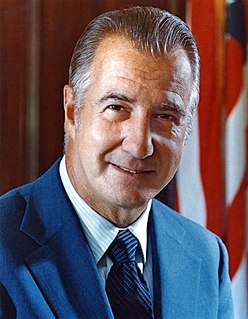
This article lists those who were potential candidates for the Republican nomination for Vice President of the United States in the 1968 election. After winning the Republican presidential nomination at the 1968 Republican National Convention, former Vice President Richard Nixon convened a series of meetings with close advisers and party leaders such as Strom Thurmond in order to choose his running mate. Nixon ultimately asked the convention to nominate Maryland Governor Spiro Agnew as his running mate. By a large margin, Agnew won the vice presidential nomination on the first ballot over Michigan Governor George W. Romney, who was supported by a faction of liberal Republicans. Nixon chose Agnew because he wanted a centrist who was broadly acceptable to the party, had experience with domestic issues, and appealed to Southern voters. The Nixon-Agnew ticket defeated the Humphrey-Muskie ticket, and also won re-election in 1972, defeating the McGovern-Shriver ticket. However, Agnew was forced to resign as Vice President in 1973 due to a controversy regarding his personal taxes.

This article lists those who were potential candidates for the Republican nomination for Vice President of the United States in the 1952 election. After defeating Ohio Senator Robert A. Taft for the Republican presidential nomination at the 1952 Republican National Convention, General Dwight D. Eisenhower needed to choose a running mate. Taft recommended Illinois Senator Everett Dirksen, but Eisenhower rejected the suggestion. Eisenhower and his advisers put together a list of prominent Republicans who were acceptable to both the conservative Taft and liberal Dewey wings of the party, anti-Communist, talented at campaigning, relatively young, and who contributed to Eisenhower's nomination victory. After conferring with Republican Party leaders, Eisenhower decided to ask California Senator Richard Nixon to be his running mate; Nixon accepted the offer. Nixon had carefully campaigned for the post of vice president since meeting Eisenhower in 1951, and Nixon helped deliver the California delegation to Eisenhower in the presidential ballot. The Republican convention ratified Eisenhower's choice of Nixon. Months after the convention, Eisenhower considered asking Nixon to step down as running mate due to controversy surrounding campaign expenses, but Nixon rallied public opinion with his Checkers speech and remained on the ticket. The Eisenhower-Nixon ticket won the 1952 election, as well as the 1956 election, defeating the Stevenson-Sparkman and Stevenson-Kefauver tickets, respectively.

This article lists those who were potential candidates for the Republican nomination for Vice President of the United States in the 1944 election. At the start of the 1944 Republican National Convention, New York Governor Thomas Dewey seemed like the likely presidential nominee, but his nomination was not assured due to strong support for Ohio Governor John W. Bricker and former Minnesota Governor Harold Stassen. Though Dewey wanted California Governor Earl Warren as his running mate, Warren was convinced that Franklin D. Roosevelt would win re-election, and refused to be anyone's running mate. Some Republicans wanted to ask Democratic Senator Harry Byrd of Virginia to be the Republican running mate in order to pursue the Southern vote, but this possibility was not seriously pursued. Dewey and his advisers instead worked out a deal in which Bricker's delegates voted for Dewey in the presidential ballot, and Dewey in return chose Bricker as his running mate. The Dewey-Bricker ticket, which balanced the moderate Northeastern and conservative Midwestern wings of the party, was ratified by the Republican convention. The ticket lost the 1944 presidential election to the ticket of Franklin D. Roosevelt and Harry S. Truman.
